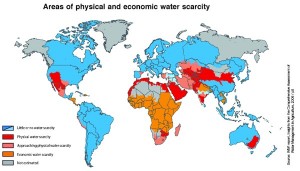Solar thermal technology adds different contexts and consequences to energy access for the world.
The benefits the technology has on carbon emissions and cost are based on a prior usage of the technology. This implies that the technology is used for water or space heating. However according to the World Water Organization only 20% of the world has access to running water. Solar thermal technology is not as helpful to those without access to running water. This is a massive inequality as the technology doesn’t apply to a significant population of the world.
However for those with access to running water, the technology does open access to those who don’t have simple or cheap access to electricity or fossil fuels for water or space heating purposes. Fossil fuel may be harder to come by in some areas and the implementation of solar thermal technology opens the opportunity of water and space heating where it was more difficult or impossible before.
The inequality of access can be seen through a economic class. Those who cannot afford the expensive initial investment of a solar thermal system are not able to receive the benefits. Those who are able to take on the initial costs of the implementation of a solar thermal heating system are able to gain more benefits. Since a person with more income can afford a more expensive initial investment they gain a greater access to energy. The technology then can be seen as only benefiting those who can afford it. This inequality is a consequence of the technology.
Authored by: Chris Castello
Edited by: Sean Murphy


